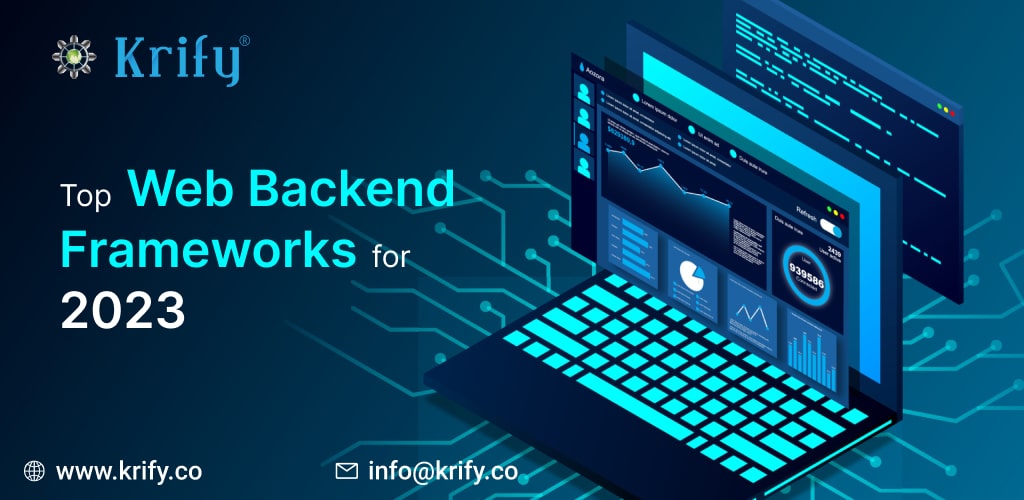In the constantly evolving world of web development, an increasing number of developers are turning to backend frameworks as they offer speedy development, scalability, and other features. In 2023, there are a variety of backend frameworks available to satisfy the multifaceted requirements of modern web development. We’ll take a look at the top seven backend web development frameworks for 2023.
Best Web Backend Frameworks
1. Express:
Express is a popular open-source framework that provides a minimal yet flexible and feature-rich backend framework. It is widely used in microservice architectures because of its lightweight and efficient nature. Developers typically utilize Express with Node.js, leveraging its JavaScript codebase to create enhanced applications with high performance and scalability.
2. Django:
Django, built on Python language, is a full-stack backend web development framework that provides a wide variety of development tools for web developers and helps them efficiently complete their tasks. Its robust programming environment and built-in ORM layer make it ideal for creating complex apps quickly. Additionally, its customizable components and user authentication modules enable developers to build applications of any kind and size.
3. Kraken. Js:
Kraken.js, leveraging the popular Express framework, serves as an advanced, full-featured framework for server-side application development. Developers extensively use it to create database management systems, web applications, and REST APIs. It enables developers to rapidly prototype and develop applications with its wide range of features.
4. Node Js:
Node.js is a powerful JavaScript runtime environment built on Google Chrome’s V8 JavaScript engine. It is open-source, cross-platform, and allows the creation of highly scalable server applications using JavaScript. Node.js uses an event-driven, non-blocking I/O model that makes it lightweight and efficient, perfect for data-intensive real-time applications that run across distributed devices.
5. Ruby on Rails:
Ruby on Rails, built on the Ruby programming language, is the oldest and most mature backend web development framework. It is fast, efficient, and provides a vast library of tools to simplify coding. RoR is ideal for database-driven applications, and its built-in ORM layer helps in rapid application development. Additionally, its plug-ins and associated development libraries provide a rich set of features.
6. Zope:
Many Python packages are compatible with Zope, making it a highly versatile platform that developers can use for rapid prototyping or production development. As such, it has become one of the most popular frameworks available for developing dynamic web applications.
7. ASP.net Core:
It is, built over the .NET framework, and is a powerful and robust backend web development framework. It enables rapid development and smooth deployment of large-scale applications with high scalability. Its sophisticated programming environment and set of robust tools help developers troubleshoot and debug applications quickly and efficiently.
Conclusion:
These are the top backend development frameworks for 2023. It is essential to choose the right framework for a specific web development project. It is equally important to identify the strengths and weaknesses of each framework for an effective development strategy. Choosing the right framework for a project can help developers save time and resources, enabling them to create impressive applications quickly.
At Krify, we have a team of professionals who are well-versed in the latest technologies and trends. If you are interested in developing responsive web applications using the latest backend technologies, contact us today.



